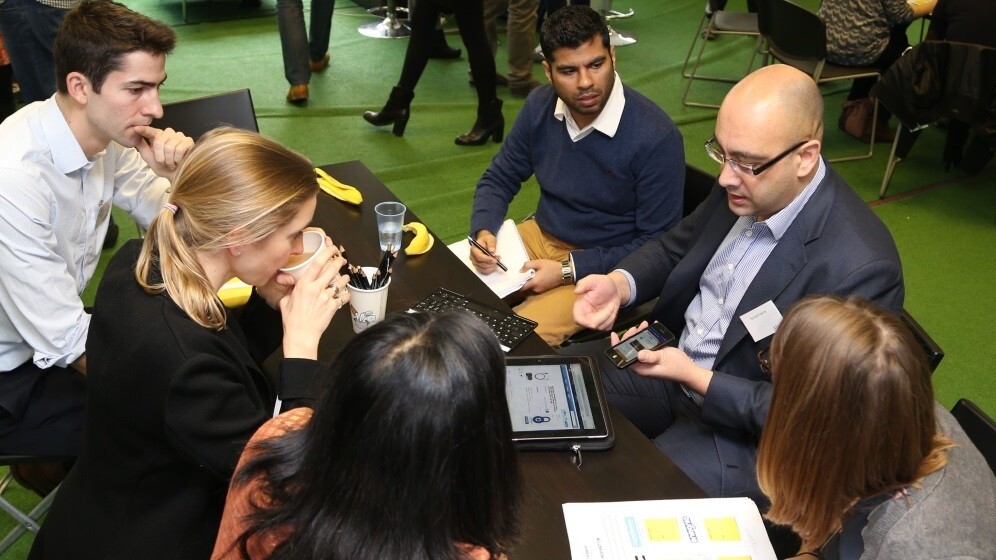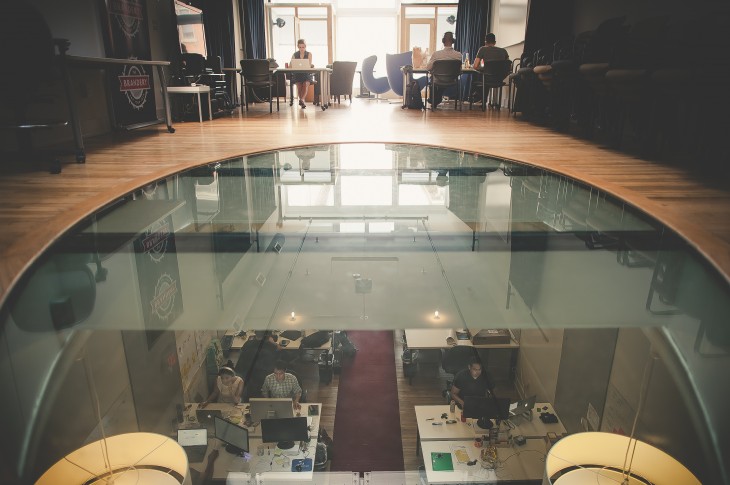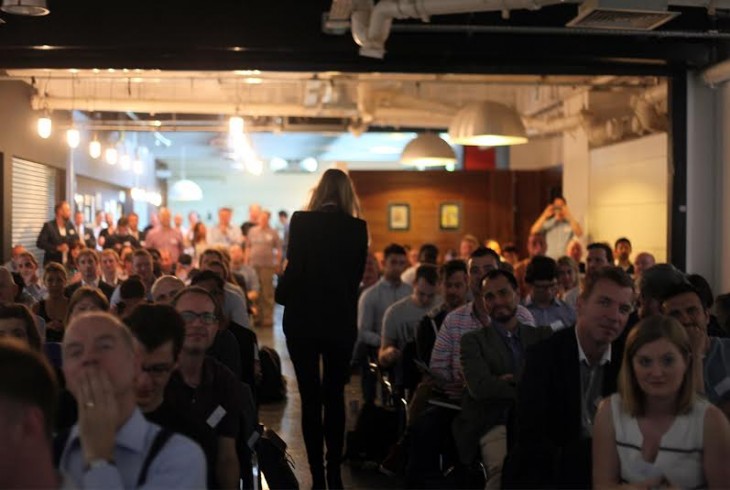
If you’re a young startup with a gleam in your eye, a working prototype in your back pocket and very little else, then making the right first step will be crucial for success.
For founders with little-to-no previous startup experience,joining an accelerator makes a lot of sense. Even if you’re a seasoned pro with an exit or two under your belt, a helping hand might still be useful.
Traditionally, accelerators provide a combination of things; primarily a small amount of funding, a space to work and access to mentors, industry bodies and individuals they would otherwise struggle to gain the attention of.
However, while many accelerators are open houses in terms of their focus, there’s been a growing trend of certain businesses to host their own in-house programs, or take part in accelerators that are designed to connect brands with tech startups.
So, how does a brand-focused accelerator – that is, one that promises startups an audience with relevant world-leading brands in their area of focus, or one focusing a specific segment of industry, differ from a more general approach? We spoke to Brandery, Collider, The Bakery London and Orange Fab to find out what they had to offer.
What do startups get out of brand accelerators?
So, what a startup gets out of a brand accelerator is pretty similar to other accelerators – although the specifics of the funding and other benefits often vary.
For example, Collider – a UK-based organization that works with more than 27 individual brands – gives startups a combination of oversight, cash and mentorship over a program lasting 13 weeks.
Each of the Collider startups this year will get up to £150,000 ($243,000) – increased from up to £70,000 – to help them bring a product to market, its co-founder Rose Lewis explained. However, it’s the focus on a specific vertical and the added exposure Collider gives the startups and brands that really makes the key difference, she argues.
In the first four weeks of our accelerator, they meet with up to 12 brands – all giving their time to the startups, and all [based] around the product marketing questions: are these businesses building stuff that William Hill, Unilever, Haymarket are going to buy?
The view from the front of a Collider event
To break that funding down a little: 10 startups get £50,000 each – from which they are charged £10,000 for the program, and have to give up 11 percent equity. After four months, five of those startups will get another £100,000 each for an additional 11 percent equity and additional £10,000 for eight more months of support. So, it’s a fairly large funding option for startups at an early stage, but it comes at a cost too.
Brandery‘s four-month long program is similar to Collider’s – it provides support for seed stage companies in the form of $25,000 in funding, mentoring and access to a host of discounted or free services (such as IT, HR, legal etc.). Brandery also provides one year of free office space for a year, general manager Mike Bott explained. Collider does not offer physical work space.
“Each startup is paired with a creative agency who has committed at least $25,000 in free work. Specifically, two intensive workshops are conducted during the program to get the startups off to a fast start, Brand in a Day and Growth Hack Day. During Brand in a Day, the startups and their creative agency partner develop core brand architecture: new names, logos, taglines, brand manifestos, visual identity and other core pieces of their brand.
Similarly, during Growth Hack Day, the startups, their creative agency partners, and brand managers from Procter & Gamble hammer out key parts of the startups’ marketing plans, including user acquisition strategies, go-to-market strategies, and other ‘growth hacks’ they can use to keep the startup growing and retaining users as quickly as possible.

A shot of Brandery’s work space
One of the startups to come through Brandery’s program – and now a part of Disney’s accelerator is ChoreMonster. Chris Bergman, founder and CEO of the company told us that the experience was “incredible” for the company.
We were able to learn from top mentors in the branding space, specifically about what we should do to create a strong brand, how our technology could benefit their agencies, and how brands at Fortune 100 companies operate. I couldn’t imagine our company without the understanding that we gleaned from The Brandery.
Slightly differently, while Brandery and Collider tend to focus on seed stage startups looking to develop their business rapidly for the long-term, The Bakery London exists solely to accelerate ad-tech and marketing startups to a test market within eight weeks.
Its focus is increasing revenues, not scoring investment, its co-founder Alex Dunsdon explained to TNW.
We focus on markets (revenue) not investors (equity)..ie the objective is a trial market not investment in the company. We start with the problem, ie. what the market wants now. Many of the best businesses are able to carve out products that people can test now.
We find the right tech globally against problems. Think of it like flipping the way it normally works – telling the world of tech companies what the market is.
Dunsdon added that it takes very little time to accelerate a technology to trial stage, so the only real reason you’d perhaps want to look elsewhere is if you were looking for investment to get off the ground, rather than looking for a perfect market fit.
All [the companies attracted to our program] have a product and share a desire to scale. The big problem we solve is product / market fit and the ability to use a brands audience to scale.
For other startups, there are reasons to think twice about joining a specific brand’s accelerator program.
The Bakery London event
For example, if its technology isn’t particularly well aligned with the brand, or because the startup fears that association would jeapordize its independence. It might also make more sense for a startup to enter into an accelerator program based on a specific topic, rather than a specific brand, such as FinTech or health-oriented programs.
The funding aspect of brand accelerators like these are in contrast to the way in which Orange Fab operates: there’s no systematic cash support, although it does provide a convertible note option for interested startups – up to €15,000 in France and $20,000 in the US. Instead, at the end of the program, Orange’s VC division can choose whether or not to invest in the startups.
Douplitzky said that VC affiliates like Iris Capital tend to make minority investments in startups, but that the program launched too recently to provide details on the percentage that receive follow-on funding.
Ultimately, whichever accelerator a startup enters, they generally provide similar benefits on the surface, and an underlying promise of more closely connecting each startup to a brand, whether that’s a single one or mutliple. In some cases they also provide the potential to add legitimacy to startups simply through their association, which is a slightly less tangible benefit.
Next page: In-house programs, and do brand-focused accelerators help you make an early exit?
In-house programs
Alongside general intake accelerators and brand-focused ones like those already discussed, big firms are also trying to get in on the action by hosting their own in-house programs .

Image via OrangePartner.com
According to Igor Douplitzky, Business Development Director at Orange Fab, there aren’t really any huge differences between the type of activity a regular accelerator undertakes and a brand-focused/in-house one – although the latter does mean that applications are filtered according to those that are mostly closely aligned with the parent company, or those that present potential technological synergies.
Another of the differences between a regular accelerator and something like Orange Fab is that startups get the chance to interact closely with multi-disciplinary experts across R&D, operations, sales, marketing, procurement, legal etc. While not offering access to the diversity of brands as an independent accelerator or a more general approach, in-house accelerators do offer the benefit of exposing startups to an ecosystem of partner and customer brands.
“Regular tech accelerators may focus on specific innovation domains but they are less likely to seek to foster business synergies with specific brands, although they are instrumental in developing relationships with their sponsors which may well include brands,” Douplitzky added.
Of course, brands aren’t limited to one activity or the other – Orange Fab is the company’s own in-house three-month accelerator, but it still takes part in independent programs like Le Camping in Paris too.
Orange is by no means the only brand to invest in its own accelerator program though, other high-profile launches include the Nike+ Accelerator, which later grew into its ongoing FuelLab project and things like BBC Worldwide’s digital media startup accelerator, which provides the usual mix of mentors, infrastructure assistance and exposure to potential partners.
However, these (mostly) single brand accelerators offer a different experience to the others. In these, startups are often fully formed and looking to integrate a specific brand with their product more closely or help to build new services around it.
One such startup that has taken part in Collider’s program and is currently a part of the BBC Worldwide accelerator is Seenit. Its co-founder founder Emily Forbes tells us that the two offer a slightly different experience – but both are invaluable.
Both have been fantastic and are continuing to lead to exciting brand contracts, they assign relevant mentors which fit your business and have multiple brand partners.
Collider is more structured, they offer cash for equity and have an intense first three months of workshops kickstarting their companies getting them up and running. The Labs programme is slightly more hands off in terms of having a timetable. There is no cash and they don’t take any equity but instead open up the BBC address book and work towards potential partnerships with their brands. They also set you up with desk space within the BBC…not a bad place to sit for a video startup!
While Forbes was ultimately enthusiastic about the experiences, she said that even these accelerators could help startups more by deciding on an allocated budget from brand partners before the program gets underway.
One of the hardest things when working with big brands as a small start up is getting budget signed off quick enough; if accelerators could agree with brand partners on allocated budget beforehand, it would massively help to just get that first project off the ground.
What do brands get out of it?
In general, brands love accelerators because they get access to relevant new technology early in its development – this can help gain a competitive advantage in the market, as well as improve credibility. Working with a startup is cool, in case you hadn’t been paying attention these last few years.
“They also get an image boost since they are perceived as playing an active role in the development of innovation ecosystems in the countries where they do business,” Orange Fab’s Douplitzky said.
As brand-focused programs tend to focus on startups that at least have a MVP (minimum viable product) or working prototype, the brands not only get the chance to play a role in the formation of new technologies, but they also get the chance to test them out at relatively little expense or risk, The Bakery’s Dunsdon points out.

Another view on the Brandery office space
In addition to access to technology, the accelerators also sometimes get a percentage of the company’s equity – sign-up for Brandery’s program and it’ll cost you 6 percent of your company.
Whether or not that seems like a good deal for the startups involved always inevitably comes back to the ‘x percent of something is better than 100 percent of nothing’ train of thought – it’s a numbers game, and there are just too many startups and good ideas for them all to survive.
That said, not all accelerators take a slice. The Bakery London doesn’t.
The potential payoff
The point of some of these accelerators is to get a startup to a point of sustainability and growth, which can come from the host brand (if in an accelerator like Orange Fab) or from one of a number of different brands, if it’s a program like Brandery or The Bakery London.
The Bakery wouldn’t disclose details of previous startups that had struck up deals after using its trial market acceleration program, but it did say that it regularly works with the likes of BMW, Unilever, Panasonic, Heinz, HSBC and other household names in the UK.
Similarly, Brandery said that its startups have raised an aggregate of more than $50 million and that 85 percent receive follow-on funding. It works with brands like P&G, Nike, Pepsi and Kroger.
From Collider’s graduating companies, there’s Beem, an internal communication platform for businesses with an emphasis on mobile, who are now working with Diageo, B+Q and Unilever having raised £300,000 from GGM. Then there’s CampaignAmp, a project management and analytics platform for marketers, which attracted an additional £200,000 in follow-on funding from Collider and is now working with Universal Music and EMI.
There’s also Seenit, which helps brands and organizations to create video with their audiences. Collider’s Rose Lewis says that Unilever, Betfred, BBC and Bayer are all using the platform and the company is about to raise a new round of financing. Collider’s Demo Day video above was actually made using Seenit.
However, Orange Fab’s Douplitzky said that it “principally offers non-financial support” and that “the point of accelerators is not to act as a funding vehicle. Most of the start-ups have already secured funding and are not necessarily looking for their next investment round”.
Companies like Trackr, MedWhat, Emberlight and Phone Halo are a part of the program currently.
No exit
If tailoring your product to a specific brand’s needs is your plan for an early exit, you’ll probably be out of luck – this isn’t the focus for any of the programs listed here.
“If the conversation happens then cool, and we help advise them, but we don’t take equity,” Dunsdon said.
Orange’s Douplitzky said that Orange Fab doesn’t snap up all its graduating startups either. Instead, he views the program as a ‘door-opener’ to wider industry.
We do not think that the main driver for startups to enter a brand-focused accelerator is the hope of being acquired by the brand although this possibility exists, of course.
Instead, our experience has been that there seem to be four key drivers for applying to an Orange Fab program 1) the prospect of selling technologies to Orange for internal use; 2) the prospect of having Orange distribute the startup’s products or services; 3) the opportunity of gaining in visibility and legitimacy through association with the renowned Orange brand; [and] 4) the opportunity to leverage Orange’s major account customers and partners – including the external VCs to which startups would pitch their solutions during the Demo Days ending the program – with Orange essentially acting as a ‘door opener’.
However, Brandery’s Bott summed up the issue nicely.
We encourage our startups to build the best brand and company for the long haul. Startups who focus on changing the world have a much better chance to do so than ones focused on the quick acquisition.
Indeed, most of the truly world-changing (and successful) are ones that stayed independent for the long-haul – how you achieve that long-haul is a different question, but integration (or at the least, insight) into a specific brand’s needs, technology, customers and supply chain probably helps in the early stages when other startups around you are left scratching their heads.
Get the TNW newsletter
Get the most important tech news in your inbox each week.






